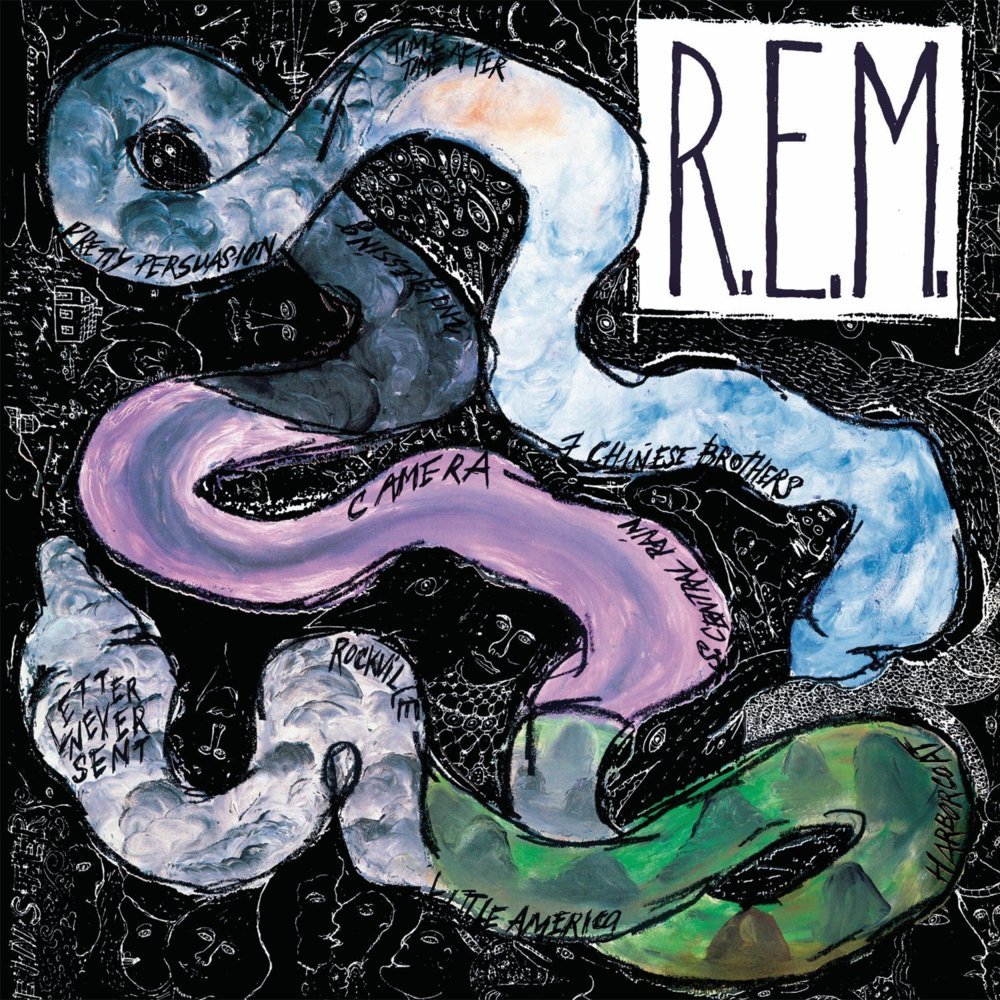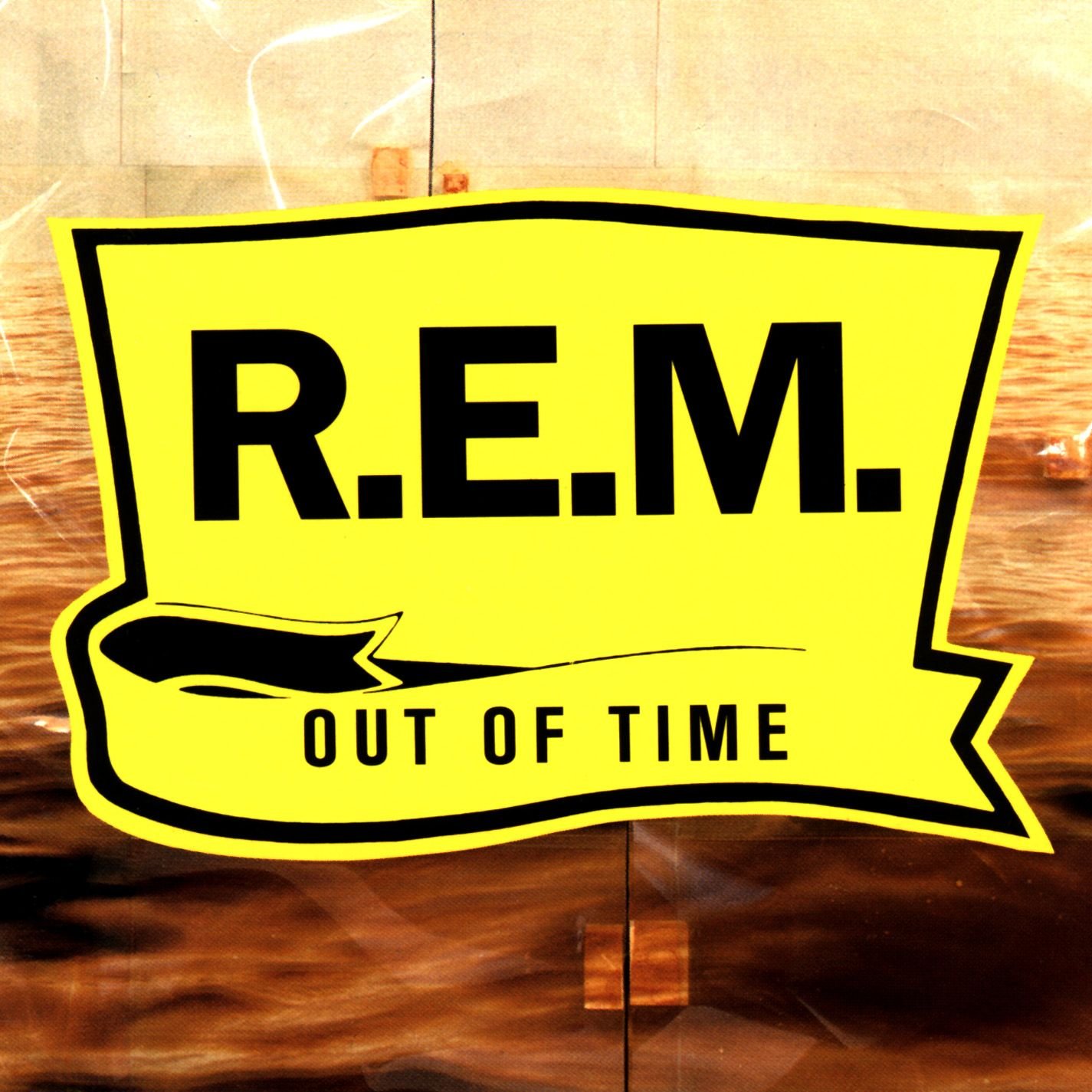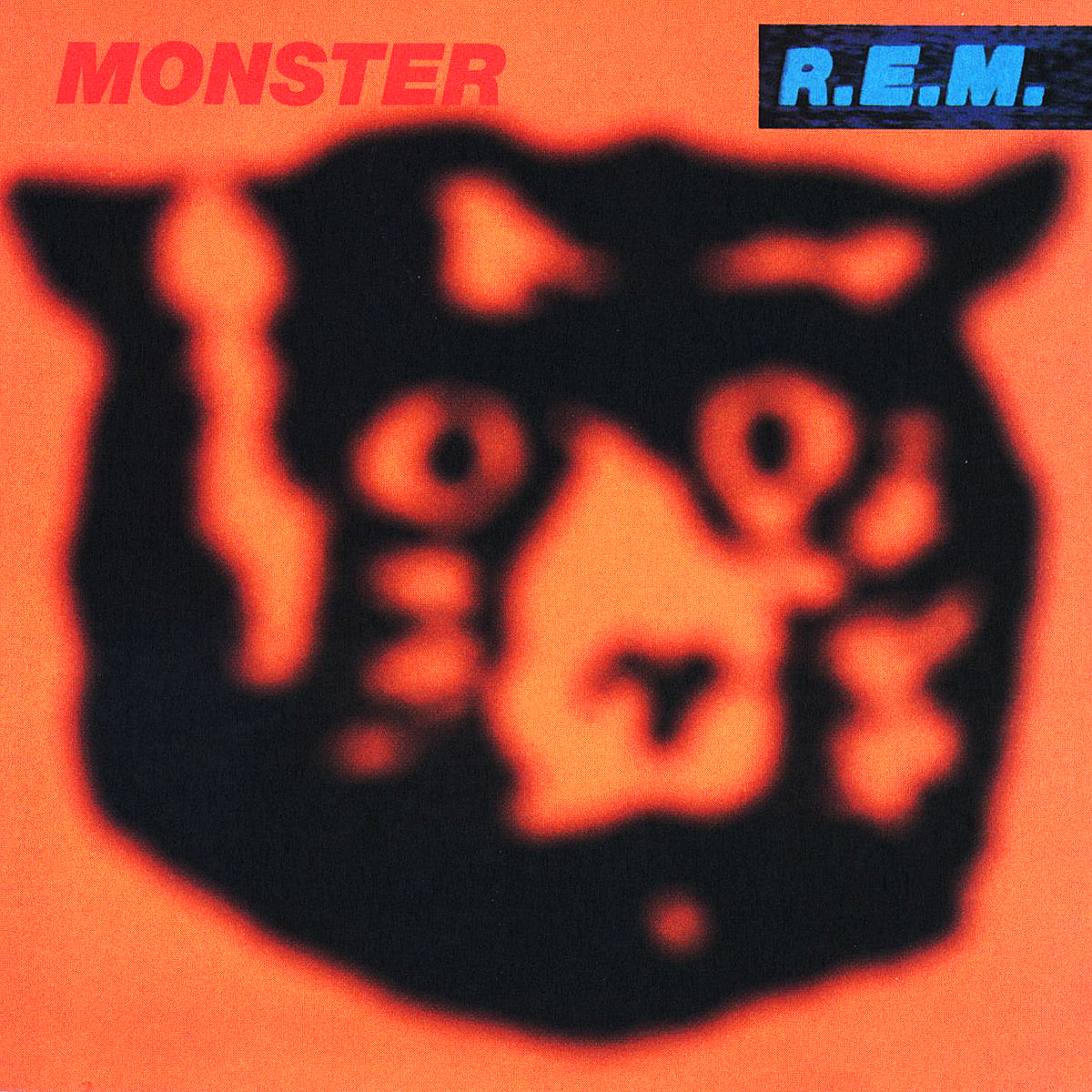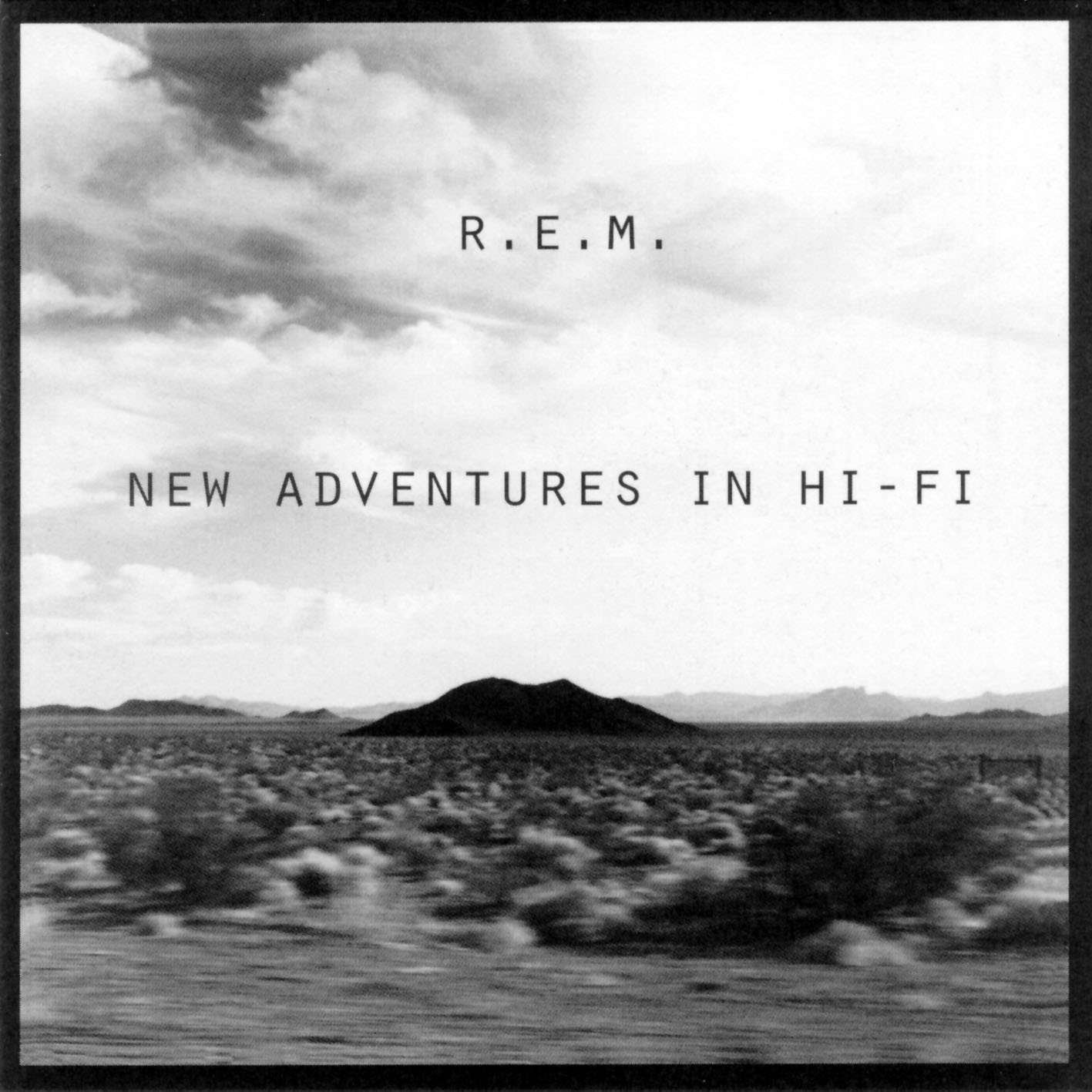Happy 30th Anniversary to R.E.M.’s eighth studio album Automatic For The People, originally released in the UK October 5, 1992 and in the US October 6, 1992.
A rectangular sign sways back and forth gently in the Georgia breeze: WEAVER D’S DELICIOUS FINE FOODS “Automatic For The People.” Back in the mid-’80s, a documentary captured several of the signs and storefronts in the ramshackle town of Athens, GA, but Weaver D’s soul-food restaurant never made the cut before the camera trained its grainy gaze on Athens’ eclectic population of musicians, poets, oddballs, preachers and outsider artists, including a young Michael Stipe, with pink-and-orange hair like a sunset, as he rehearsed with his band R.E.M. on a rickety wooden stage in an abandoned church.
The aim of the documentary, titled Athens, GA: Inside/Out, was to capture a punk-rock scene that was already fleeting, but that had provided a strong foundation for a few bands—The B-52’s, Pylon, and, of course, R.E.M.—to move on to, if not world domination, then at least world renown. But Athens would never stray far from R.E.M.’s hearts, as evidenced by their use of the slogan for Weaver D’s after achieving worldwide fame. “They liked the slogan; they wanted to use it as the title of the album,” Weaver D told MTV in a 1992 R.E.M. mini-documentary, which managed to capture the sign. “I was just so happy. It’s put a smile on my face ever since then.”
The album, of course, was Automatic For The People (1992), which would go on to sell 18 million copies worldwide and become one of the most important albums of the decade—and beyond. R.E.M. multi-instrumentalist Mike Mills explained the philosophy behind the slogan: “What it means, in terms of the restaurant, is that you walk in, you get a plate right away. You say, ‘I’d like some pork chops and greens,’ and he [Weaver D] says, ‘Automatic.’” R.E.M. liked the simple yet radical notion of delivering something high quality (and nourishing) at just the right time. And in a way that was democratic—for the people.
The year prior, the band had put out their most popular album yet, 1991’s Out Of Time, as well as their most popular single to date, “Losing My Religion,” a song that was full of alienation and highly relatable existential angst. I was in my last year of middle school, in the awkward phase of growing out my ’80s perm, and I remember that video very vividly because my friend Valerie’s grandparents had sent her an 8-hour VHS tape of non-stop MTV. We were American army brats living in Germany and, with the only American channel being the very limited AFN (the Armed Forces Network), we had to be air-mailed our MTV. It was magic, that R.E.M. video. Also, no one can understand the concept of waning faith more than a middle schooler with a shitty perm and mouthful of orthodontia.
But there was more. The Wall had just fallen, and we made pilgrimages to Berlin and chiseled off graffitied chunks of the once-looming concrete wall that we now kept in little Lucite boxes on shelves in our living rooms, and we whistled along with The Scorpions, and we basked in the idea that the Cold War had ended, order had been restored, and peace would rule the planet. But before we could take a breath, Operation Desert Storm was waged (by George H.W. Bush), and for the first time I could remember there were yellow ribbons around the trees on the base, and we could even watch the combat televised 24/7 on CNN streamed via AFN. The threat level on our army base had been deemed high by the military higher-ups, so armed soldiers stood on the roof of our middle school (located inconveniently right along the base’s back gate), and suddenly our school seemed like a part of the war zone.
Listen/Watch (Playlist):
“Losing My Religion” had tapped into something in the zeitgeist—a battle fatigue or existential weariness—and R.E.M. sensed that acutely. The band knew that they wanted to go deeper into that feeling on their next album, and that weariness became the essence of Automatic For The People. “As an artist, as a writer, you’re trying to respond to the times, and you’re trying to allow your instinct to do the work,” Stipe says in a 2017 retrospective documentary about the album. “Culturally, 1992 in America was not an easy place to be. We had been through twelve years of politically the darkest era America had ever seen, with Reagan and Bush and with AIDS. And I think the record, in a way, was a response to that. And I ended up writing a record about death and loss, and about transition. The biggest transition that we all know.” The album would end up being a salve, one where Stipe, who grew up as an army brat himself (the family moved constantly, and his father served in Korea, as well as two tours in Vietnam during young Michael’s lifetime), demonstrates an almost bottomless empathy for humanity.
Automatic For The People also ended up being a sonic triumph, and an anomaly in a landscape of heavy alt rock. R.E.M. didn’t have the pressure of having to write songs they could tour with —with their success they could do whatever they wanted—and guitarist Peter Buck was tired of being a rock star. So, they purposely sought to write mid-tempo, introspective, acoustic-based songs that were somber and melancholy. The band also brought in John Paul Jones, Led Zeppelin’s former bassist, keyboard player, and string arranger, to add some ethereal, next-level arrangements. “There wasn’t another record that year that sounded like that record,” Buck observes, rightly.
And yet the Southern-gothic Automatic For The People seamlessly wove itself into the fabric of the ’90s, playing in every alternative teenager’s bedroom to the point that Stipe’s keening baritone now seems like an inextricable part of our blood and cells and DNA. I can still hear Automatic when I picture Shana’s sister Shawntel doing all of our hair and makeup in front of a portable light-up Conair mirror before some school dance (the braces were off, baby!). I can hear it in the dirty sock-smelling room of one of my brother’s skater friends, while I tapped my foot and waited impatiently to give little bro a ride home. I can hear it in Leah’s room, searching out the perfect placement of our plastic baby barrettes before meeting up with some German boys to eat space cakes and play endless video games. No one song stands out in memory—though every song is memorable—because Automatic For The People was its own world, its own cocoon.
During my senior year of high school, I was pretty much living with my boyfriend (one of the dudes with the space cakes), and my mom mostly didn’t care, except for when she did. Then, there would be a spate of restrictions, which would usually mean I could only go over to his house a couple times a week, and couldn’t stay the night. I had a busy schedule—I was applying to colleges, editing the school newspaper, and I was an HIV/AIDS Education Peer Instructor, part of a Clinton-backed nationwide program to provide life-saving education to high-schoolers about transmission and safe sex. There was a 20-minute expanse of highway between my boyfriend’s house and mine, and that dark, desolate stretch in my Volkswagen was, on some days, my only time alone. I think of those nights when I hear “Drive,” Automatic’s opener, with its hypnotic, down-tempo, discordant guitar conjuring an endless broken middle line in the glare of lone headlights.
The song begins with the strange line “Smack, crack, bushwhacked,” followed by a monotone, lackluster call, “Hey kids, rock ‘n’ roll / Nobody tells you where to go, baby.” Because Stipe wouldn’t elaborate, Buck told biographer Tony Fletcher: “It can be read a couple of different ways lyrically. It’s about, ‘Oh there’s an election coming up, no one tells you what to do,’ and he mentions bushwhacked—you don’t necessarily have to think about George Bush although I know Michael was—and then on the other hand it could be a dumb ‘raise your fists in the air’ rock ’n’ roll song: Hey kids rock ’n’ roll— ‘Come on, Cleveland.’” The black-and-white video to “Drive” featured the very ’90s trend of crowd-surfing, and, like Buck, I think of the song as a call to meaningful action, as a plea to Gen X not to drift away on a high of teen spirit, but to focus instead, or simultaneously, on something of substance.
Enjoying this article? Click/tap on the album covers to explore more about R.E.M.:
On the heels of “Drive” is “Try Not To Breathe.” While recording a mandolin track for a demo, producer John Keane told Buck he could hear his breath over the track. Buck responded, “Okay, I’ll try not to breathe,” and it gave Stipe the idea for a lyric, written from the perspective of an elderly person at the end of life talking to a younger person (later, Stipe divulged he had written it about his grandmother). It’s a song shivering with empathy, a song full of deep reverence for another person’s rich, unique experience. “I have seen things that you will never see,” the old narrator tells the young one, and Stipe’s voice soars like the bird the old woman hopes will one day soon fly over her grave.
“Sweetness Follows” sees R.E.M. contemplating mortality again, this time from the perspective of a person seemingly in middle-adulthood. “Readying to bury your father and your mother / What did you think when you lost another?” Amid the funereal organ and cello and wailing electric guitar, however, there’s a blossom of hope: “Live your life filled with joy and wonder.”
“Everybody Hurts” takes that blossom and waters it to full bloom as Automatic’s memorable anti-suicide ballad, which does the herculean work of making anyone who listens feel truly seen, without falling back on platitude. The song borrowed from southern Black music tradition, something the band had been wary of trying. “I always feel if we approach some Black music styles, we’re stealing,” Buck told Fletcher in Perfect Circle: The Story of R.E.M. Drummer Bill Berry ended up composing the song primarily on acoustic guitar. Raised on The Meters and southern rock, Berry wasn’t as concerned about imitation.
“New Orleans Instrumental No. 1” is a contemplative instrumental interlude in the middle of the record, alternating sonically between melancholy and joy, and possibly inspired by the band’s decision to record part of the album in that city. “We would move from city to city when recording to try to absorb some part of what that city had to offer us,” Stipe said.
While in Miami, the band recorded “Nightswimming,” which had been written as a sweeping piano piece, but that sounded even more powerful in a loop. “That allowed the vocal to kind of move around and change the melody and change the meter on top of this repeated loop,” Stipe recalls. “It’s one of my favorite songs we ever wrote.” It’s one of my all-time favorites, too, and it reminds me of my first summer home after my first year of college, when my friends discovered a municipal pool that was easy to break into, and we’d swim joyfully, nakedly, in the quiet dark. The photograph on the dashboard, taken years ago / Turned around backwards so the windshield shows / Every streetlight reveals the picture in reverse.
At some point during the recording process, someone said that the album was too slow and that the band needed to include some up-tempo tracks. “I thought it was a terrible idea,” Stipe said. “And the songs that came out of it, you know, they’re not my favorites. But having heard ‘The Sidewinder Sleeps Tonite’ two weeks ago, I’d wake up every fucking morning singing it—it’s the catchiest thing on earth, and it drives me crazy.” A sidewinder is an American desert snake that moves laterally, and the jangly song is so Dr. Suess-like that you can hear Stipe break down laughing in the middle of it. (Like many people, I’m guilty of having thought for a long time that Stipe was singing about “calling Jamaica,” rather than “Call me when you try to wake her up.”)
Stipe fed his pop-culture obsession further on the up-tempo “Monty Got A Raw Deal,” about actor Montgomery Clift and, it’s surmised, the tragedy of his repressed homosexuality. The pulsating “Ignoreland,” which Buck calls “the most political song we’ve ever written,” was intended specifically as a vehement cry to please not reelect Bush and to elect Clinton instead (it worked!). “Star Me Kitten,” inspired by 10cc’s “I’m Not In Love,” takes some of the subtle sexual tension from “Nightswimming” and dials it up with the brazen line, “I’m in your possession, so fuck me, kitten.” (Even with the threat of AIDS, we were, after all, still human.)
The unforgettable earworm “Man On The Moon” is, as everyone who’s seen the Jim Carrey movie knows, about comedian Andy Kaufman, who died too young of cancer. The song was born of a strange competition. “Peter had moved to Seattle, and Kurt and Courtney bought the house next door because they wanted to live next to Peter, so we were hanging out with Nirvana,” Stipe recalls. “Kurt had written all these songs with all these ‘yeahs’ in them. I wanted to one-up him—I wanted to write a song with more ‘yeahs’ in it than he had (laughs). And I did —that was ‘Man On The Moon.’” Out of all of Automatic’s faster songs, however, Stipe doesn’t mind that one: “It turned out to be one of my favorite songs that we ever recorded.”
The album concludes with the nostalgia-tinged “Find The River,” which begins with more driving imagery: “Hey now, little speedyhead / The read on the speed-meter says / You have to go to task in the city.” It’s a song about finding one’s way, whether on man-made roads or in winding nature. “Automatic is the record where I felt like I had the world’s ear,” Stipe remembers. “I felt like I could do anything. I felt really confident and powerful and also extremely vulnerable. The band provided me with beautiful songs and beautiful moods to write about loss and darkness and sadness and isolation and changes that are not easy changes. And it worked.”
LISTEN:





